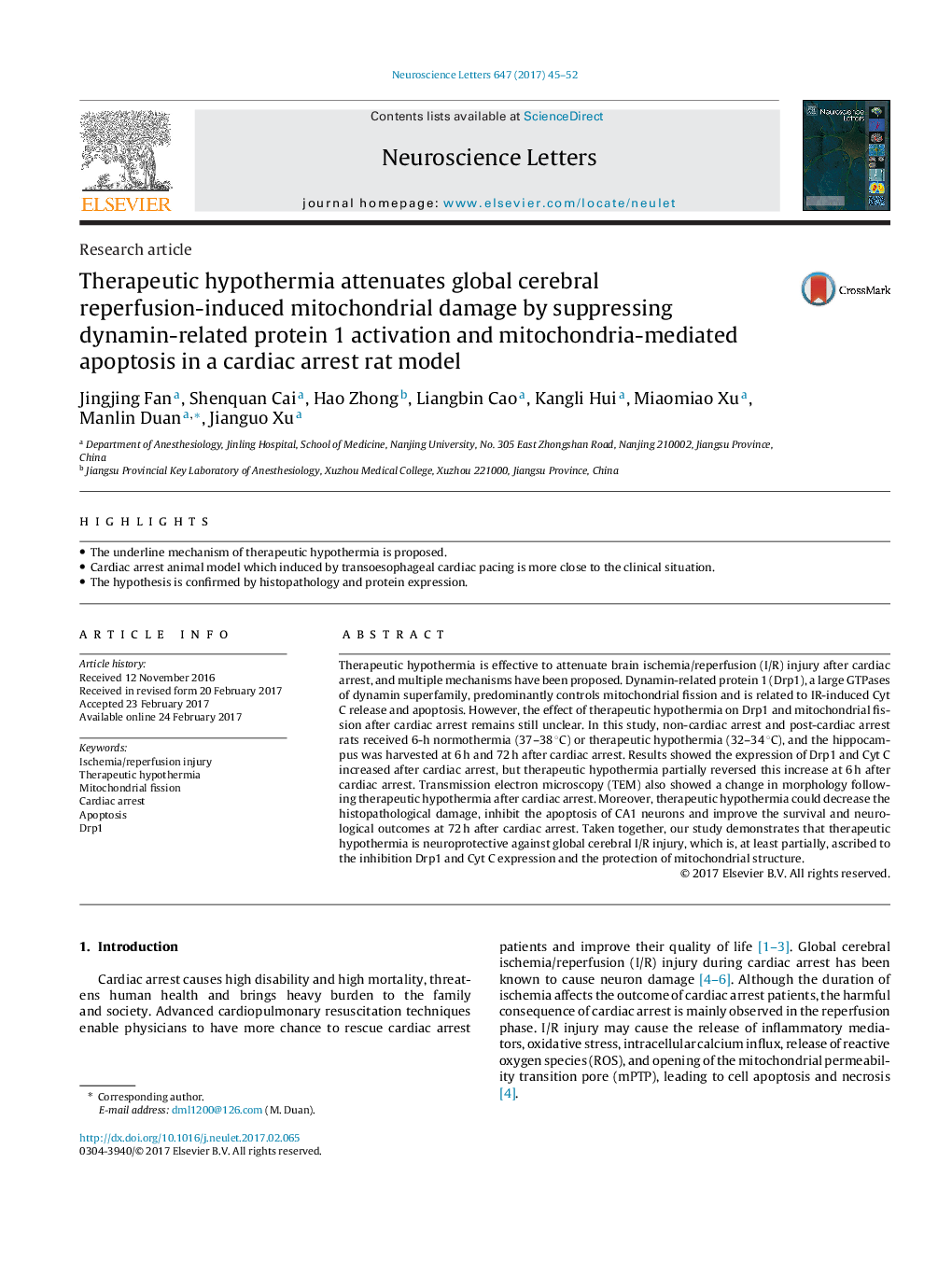| کد مقاله | کد نشریه | سال انتشار | مقاله انگلیسی | نسخه تمام متن |
|---|---|---|---|---|
| 5738429 | 1615052 | 2017 | 8 صفحه PDF | دانلود رایگان |
- The underline mechanism of therapeutic hypothermia is proposed.
- Cardiac arrest animal model which induced by transoesophageal cardiac pacing is more close to the clinical situation.
- The hypothesis is confirmed by histopathology and protein expression.
Therapeutic hypothermia is effective to attenuate brain ischemia/reperfusion (I/R) injury after cardiac arrest, and multiple mechanisms have been proposed. Dynamin-related protein 1 (Drp1), a large GTPases of dynamin superfamily, predominantly controls mitochondrial fission and is related to IR-induced Cyt C release and apoptosis. However, the effect of therapeutic hypothermia on Drp1 and mitochondrial fission after cardiac arrest remains still unclear. In this study, non-cardiac arrest and post-cardiac arrest rats received 6-h normothermia (37-38 °C) or therapeutic hypothermia (32-34 °C), and the hippocampus was harvested at 6 h and 72 h after cardiac arrest. Results showed the expression of Drp1 and Cyt C increased after cardiac arrest, but therapeutic hypothermia partially reversed this increase at 6 h after cardiac arrest. Transmission electron microscopy (TEM) also showed a change in morphology following therapeutic hypothermia after cardiac arrest. Moreover, therapeutic hypothermia could decrease the histopathological damage, inhibit the apoptosis of CA1 neurons and improve the survival and neurological outcomes at 72 h after cardiac arrest. Taken together, our study demonstrates that therapeutic hypothermia is neuroprotective against global cerebral I/R injury, which is, at least partially, ascribed to the inhibition Drp1 and Cyt C expression and the protection of mitochondrial structure.
Journal: Neuroscience Letters - Volume 647, 24 April 2017, Pages 45-52
